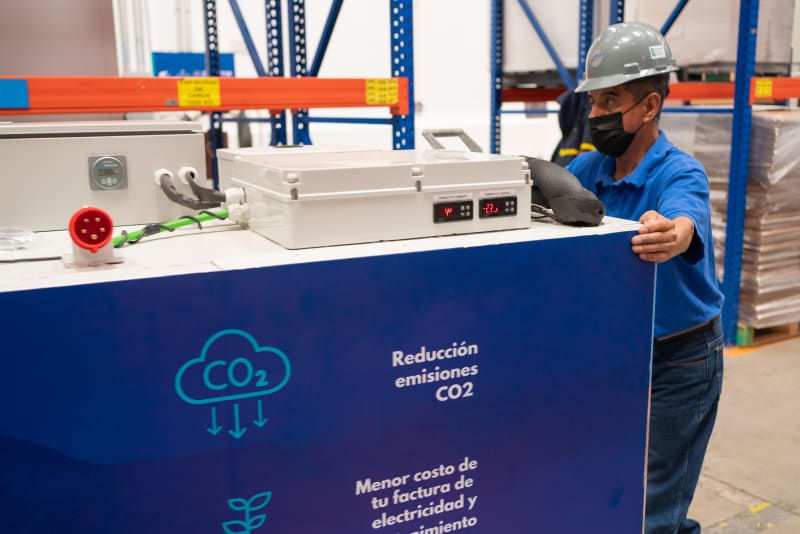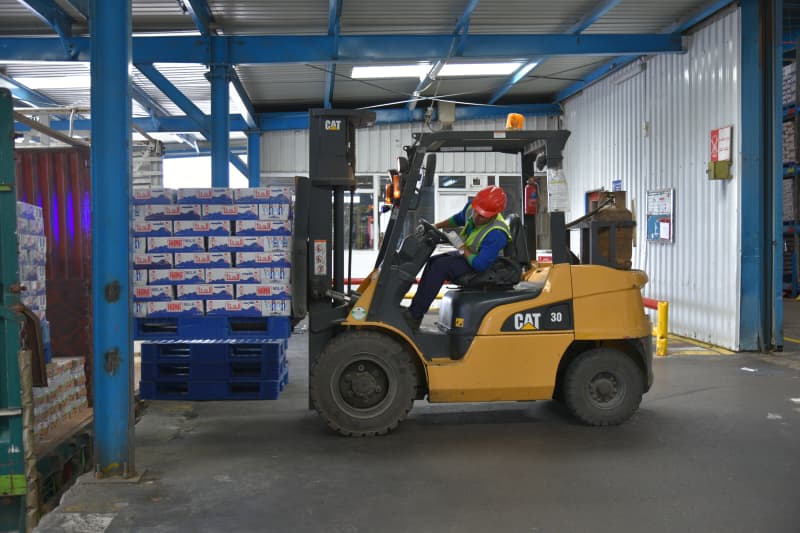Demand for Cooling is Hot.
Here's Why.
New sustainable cooling solutions can keep food, medicines, and vaccines safe.
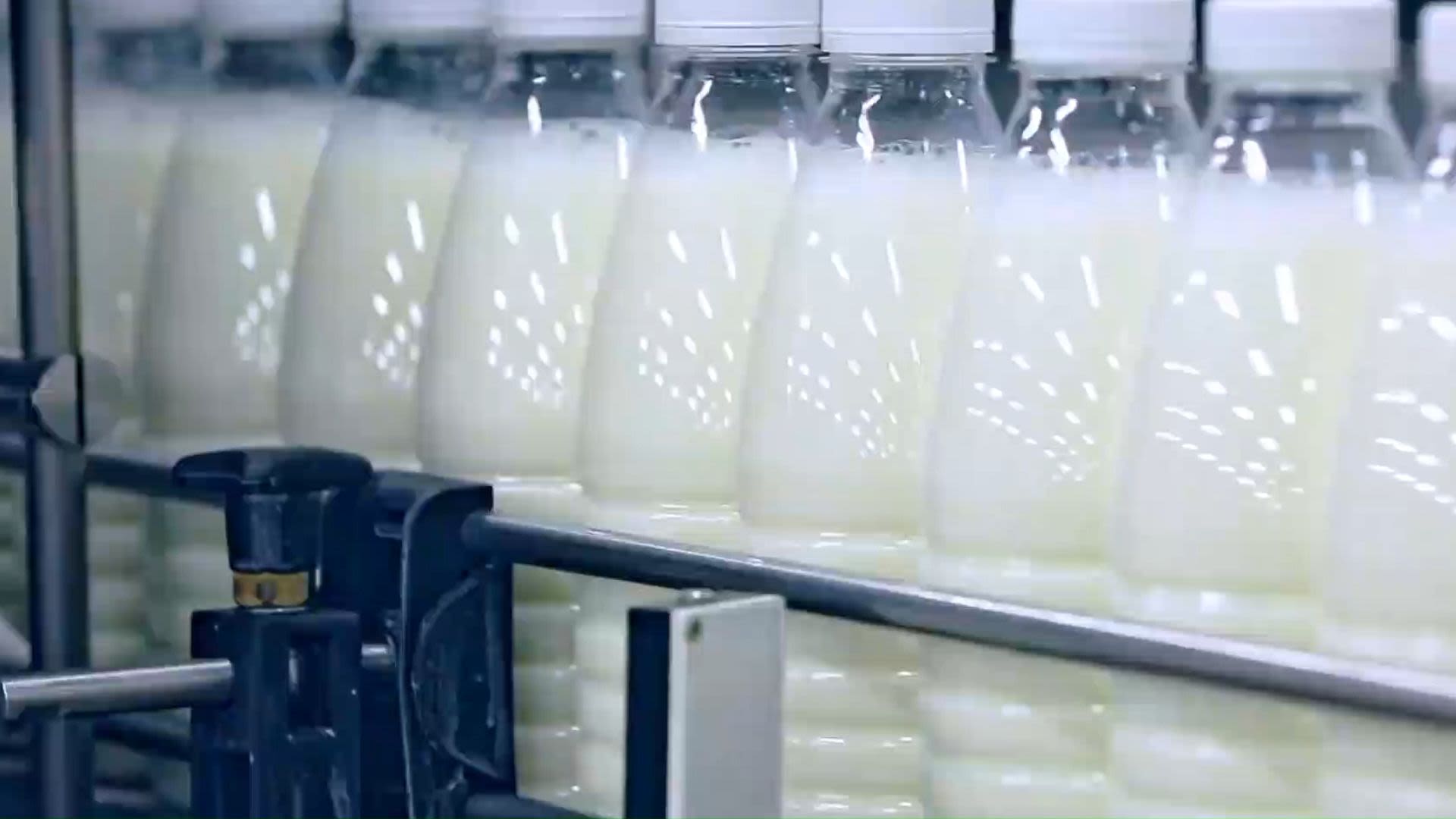
Demand for cooling is rising fast across a rapidly-warming globe. But responding to the need isn't as obvious as it may seem—because cooling systems are also heating up the climate. It's a vicious cycle: air conditioning and refrigeration units emit 7 percent of all greenhouse gases, a major contributor to climate change, and those emissions warm the world further.
The call for energy-efficient solutions is more pressing than ever, especially in emerging markets that are experiencing the ongoing impact of climate change, urbanization, and economic development. For example, cooling demand in India is growing by 15 to 20 percent annually; commercial and domestic demand for refrigeration is expected to quadruple over the next 20 years.
Because cooling is essential for human health and economic development—to protect life-saving vaccines and medicines, prevent food from spoiling, safeguard communities during heatwaves, power energy sources, and much more—start-up companies around the world are creating technologies to make cooling solutions more sustainable and cost-effective.
Businesses in Nigeria, India, and Mexico are now implementing more than 60 sustainable cooling pilot projects through their partnership with IFC’s TechEmerge, which matches start-ups developing sustainable cooling solutions with companies in emerging markets. Here’s a closer look at promising solutions in the dairy, hospitality, and pharmaceutical sectors.
Nigeria
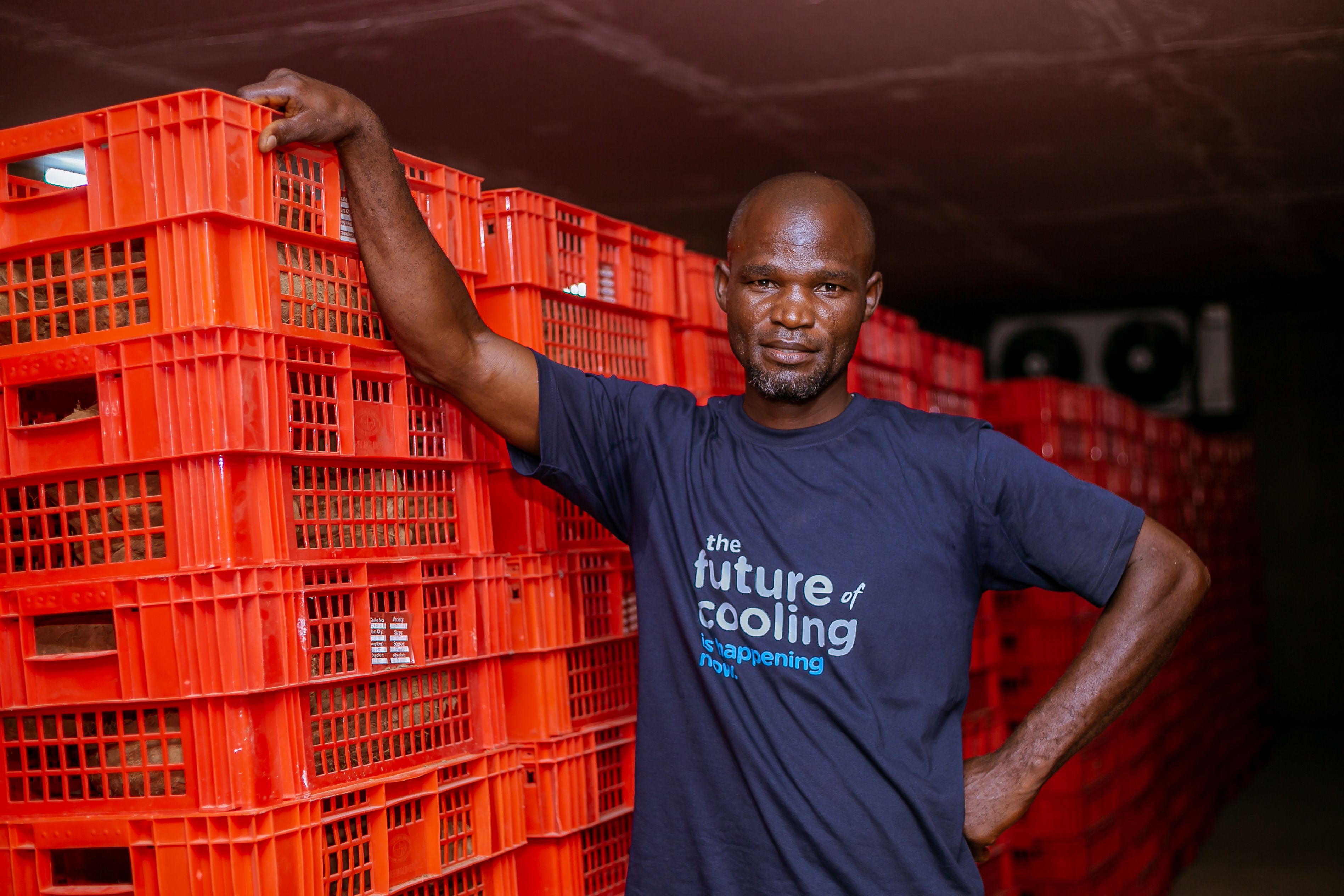
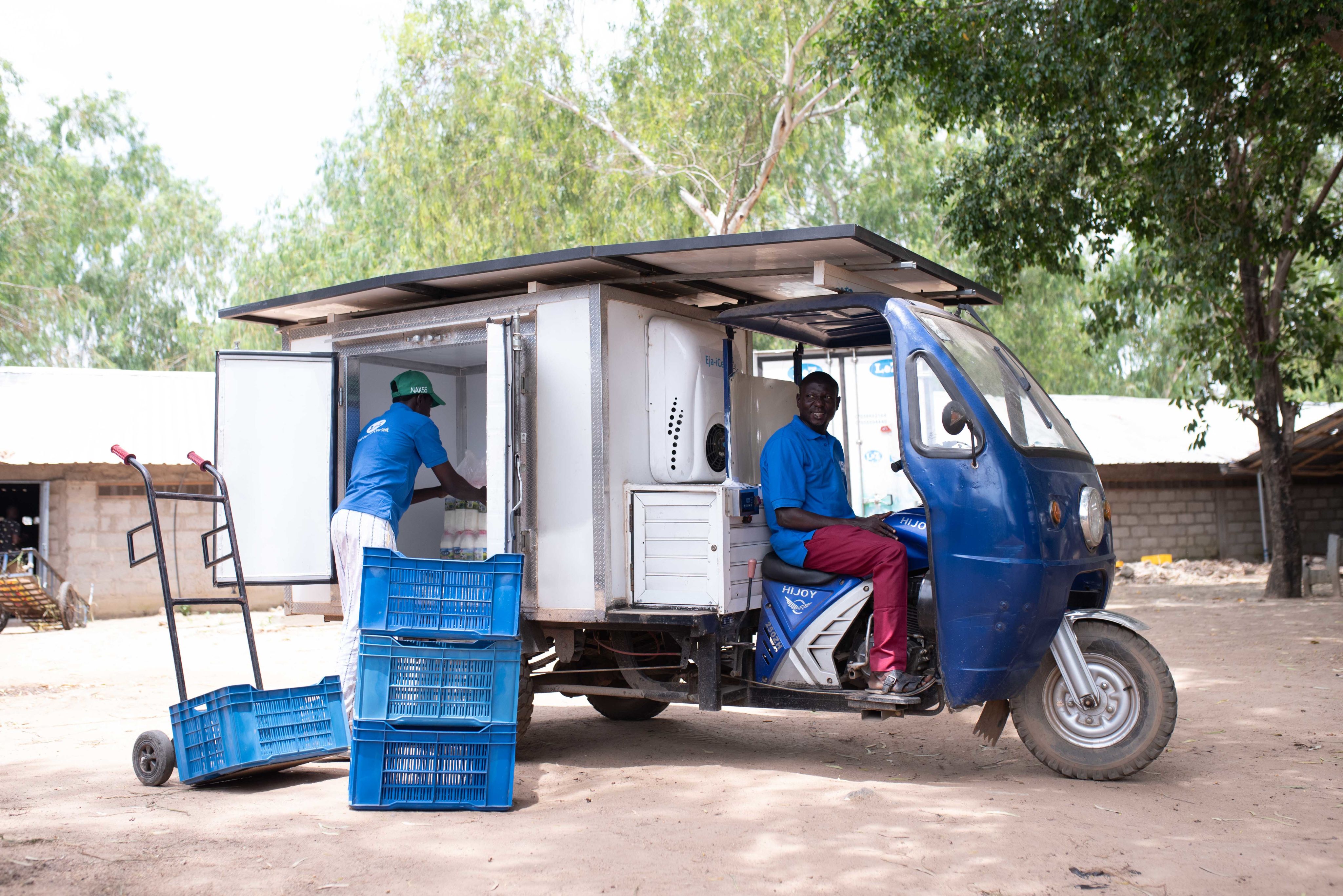
In Kano, Nigeria, an employee from dairy producer L&Z loads yoghurt into a solar powered refrigerated tricycle developed by cold chain innovator Eja Ice. These two Nigerian companies received support from IFC’s TechEmerge program to pilot the technology. Photo by IFC/Freya PR Agency.
In Kano, Nigeria, an employee from dairy producer L&Z loads yoghurt into a solar powered refrigerated tricycle developed by cold chain innovator Eja Ice. These two Nigerian companies received support from IFC’s TechEmerge program to pilot the technology. Photo by IFC/Freya PR Agency.
On a good day, Adeola Mojodi says, the electricity at his small office in Ikeja, Nigeria stays on for about 16 hours. That’s a problem because Mojodi, a local agent for Fan Milk, must keep milk and other dairy products cold before vendors pick them up for delivery.
Usually a diesel generator kicks in to power the refrigerators, but diesel is expensive—and also pollutes the environment. More frequent power outages have threatened his business and made distribution of fresh milk more difficult in the community he serves. After FanMilk sent him a Koolboks solar-powered refrigerator, worries about his inventory started to fade. Koolboks refrigerators, developed by a French start-up that is scaling solar refrigeration across Africa, keep food cool without grid power.
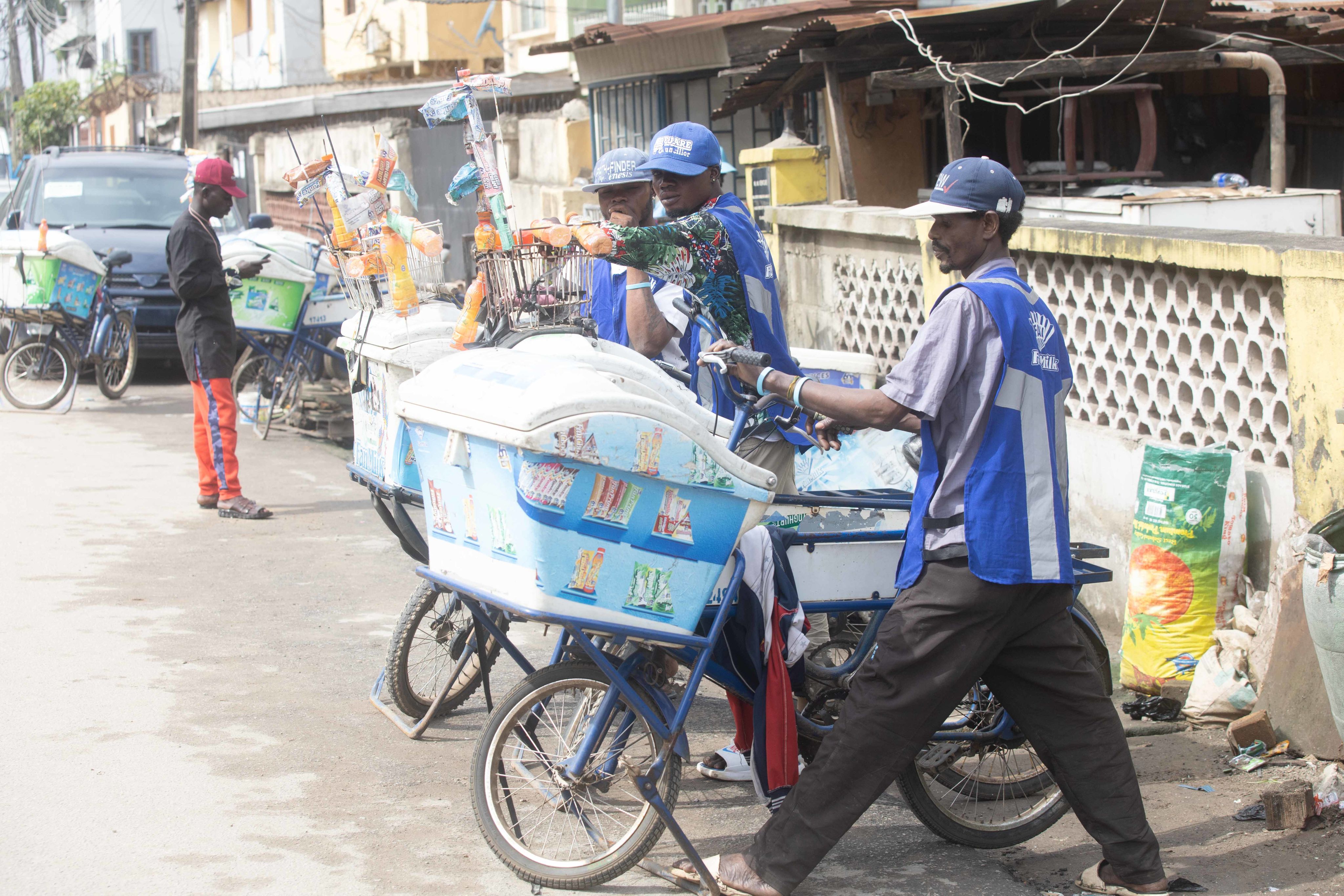
Vendors in Ikeja, Nigeria, deliver Fanmilk ice cream products frozen by Koolboks solar powered freezer. Photo by IFC/Freya PR Agency.
Vendors in Ikeja, Nigeria, deliver Fanmilk ice cream products frozen by Koolboks solar powered freezer. Photo by IFC/Freya PR Agency.
During a recent power outage, moving his products into the Koolboks refrigerator “saved the day,” he says, because he didn’t have to throw anything away. “We had no damages…and the vendors were able to go out that same day” to supply the community with milk and dairy products. If most of his refrigerators and freezers operated on solar energy, he says, “it would really help the business.”
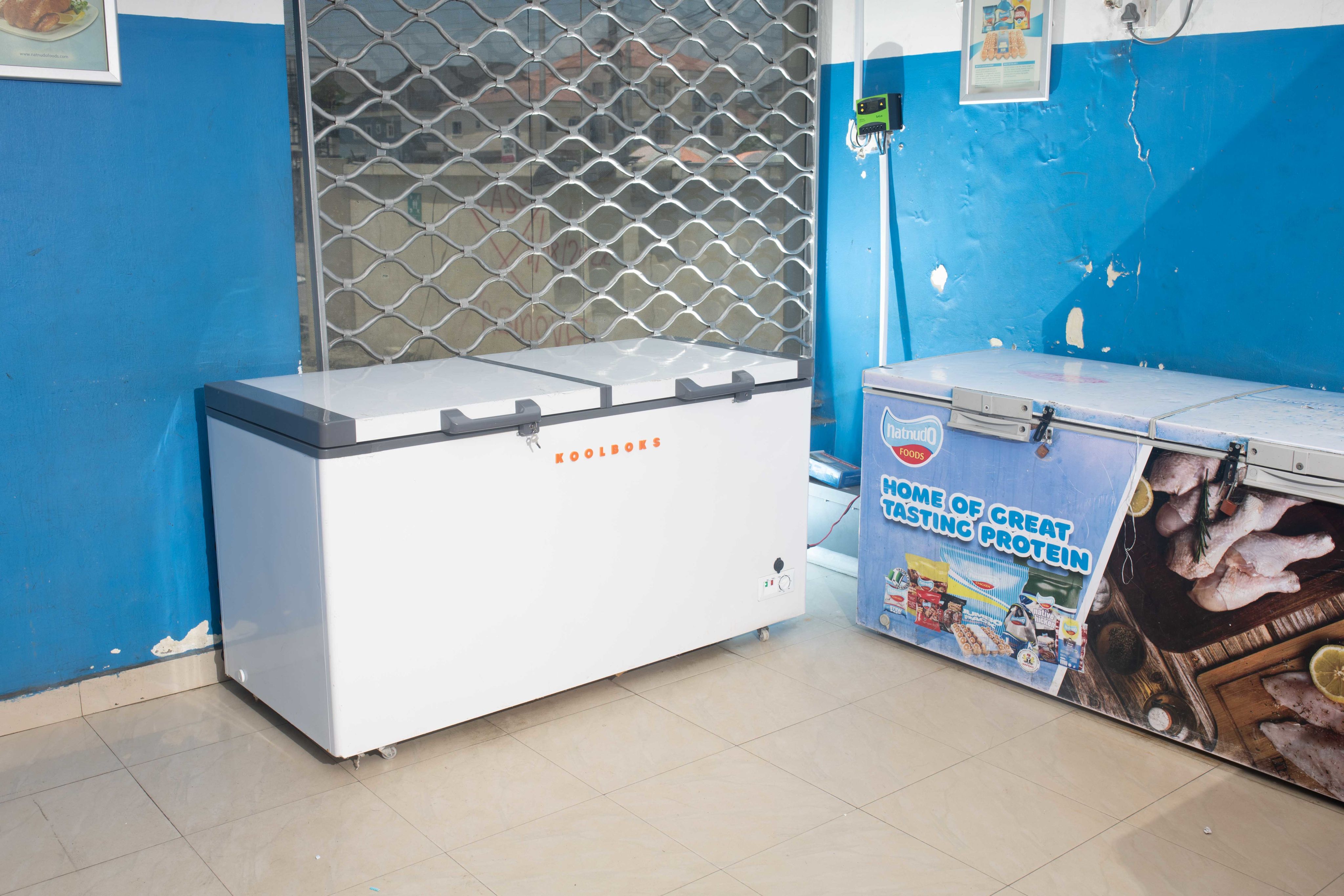
Koolboks' proprietary solar-powered freezer has also been tested at a retail store in Lagos to store frozen poultry for delivery to last-mile customers. Photo by IFC/Freya PR Agency.
Koolboks' proprietary solar-powered freezer has also been tested at a retail store in Lagos to store frozen poultry for delivery to last-mile customers. Photo by IFC/Freya PR Agency.
Mojodi is one of more than 1 billion people—the vast majority of whom live in Africa and Asia—whose lack of access to cooling poses serious risks to health, development, the climate, and individual livelihoods. Solar-powered refrigerators and freezers like those from Koolboks, part of a TechEmerge pilot, aim to offer cost-effective, dependable options.
To meet the need for long-haul transportation solutions, TechEmerge has paired cold chain innovators Indafre (Colombia) and Tessol (India) with major food and pharma retailers such as Câm Dairy, Anthorad/Relifood, Spar, and GSK. The companies are testing climate-friendly thermal storage technology to transport frozen and chilled commodities such as dairy products, frozen chicken, fresh fruits and vegetables, and pharmaceuticals.
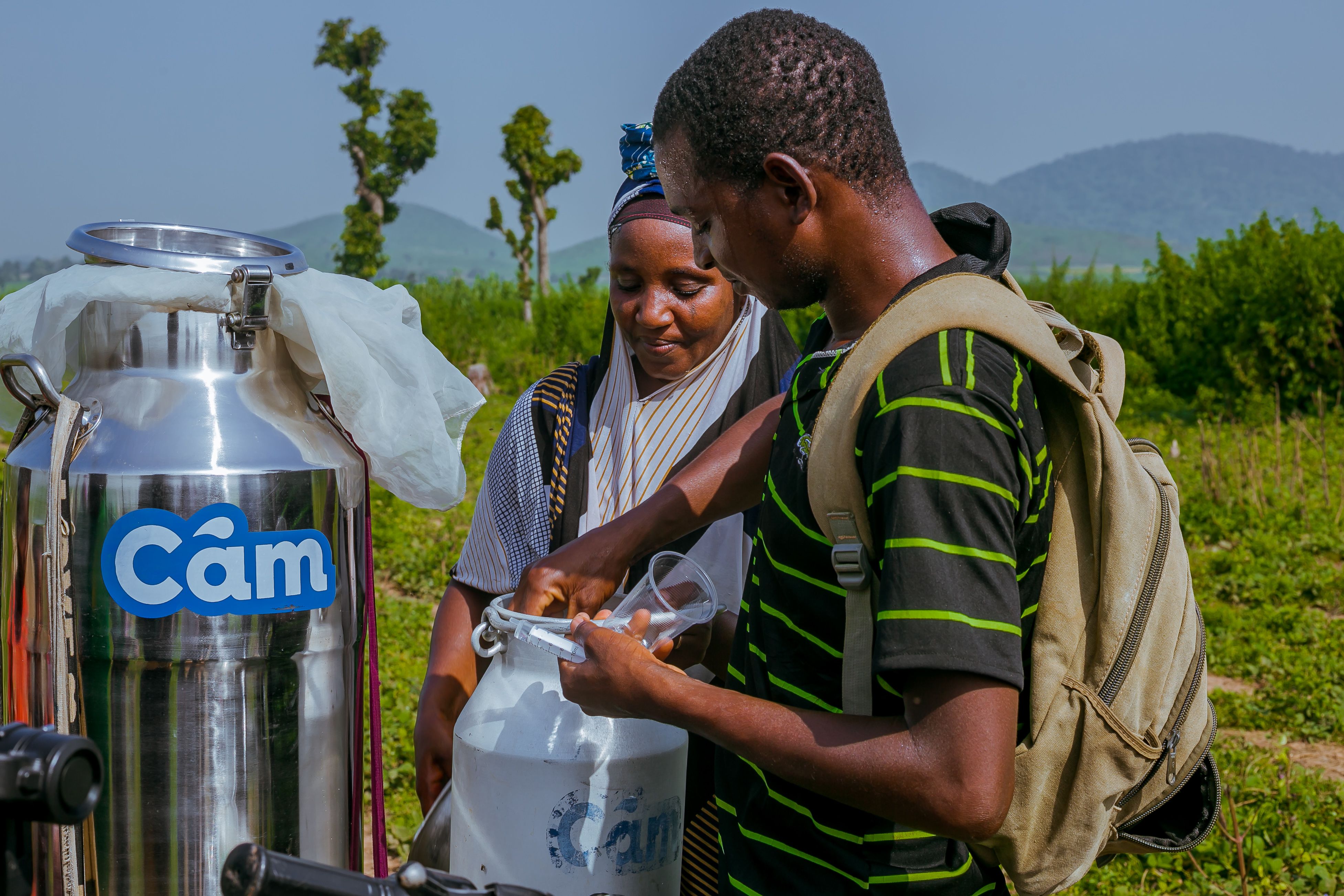
A Câm Dairy aggregator picks up milk from a pastoralist farmer in northern Nigeria. The drive from rural communities to collection centers to Câm's factory in Abuja typically takes hours on poorly surfaced roads and at high temperatures. Photo by IFC/Freya PR Agency.
A Câm Dairy aggregator picks up milk from a pastoralist farmer in northern Nigeria. The drive from rural communities to collection centers to Câm's factory in Abuja typically takes hours on poorly surfaced roads and at high temperatures. Photo by IFC/Freya PR Agency.
A pilot with TechEmerge has enabled Câm Dairy to develop cold supply chains that safely transport milk produced by pastoralist communities in the northern part of Nigeria to aggregation centers, central milk processing plants, and consumers. Câm field tested refrigerated trucks built with technology from Tessol as well as specialized cold boxes from Indafre and Tessol to transport smaller volumes using normal "dry" trucks. Results indicate that these technologies were able to maintain the temperature for 24 or 36 hours without the use of electricity or fossil fuels.
Indafre boxes were also tested for retail storage and last-mile transport. In a pilot with Anthorad and Relifood, Indafre eliminated the need to run a diesel or petrol generator to keep meat cold, and opening and closing the cooling box during market trading had a minimal impact on the temperature.
Such solutions could strengthen food security within Nigeria and across the continent. Food losses in sub-Saharan Africa reach $4 billion every year, according to the FAO.
Currently, Nigeria loses 40 to 50 percent of the total food produced every year, and the lack of cold storage and refrigerated transportation accounts for at least a quarter of post-harvest losses. For example, an estimated 40 percent of Nigeria's yam crop yields are wasted because there is no successful temperature-controlled commercial yam storage facility.
One new solution is a low-cost insulated storage facility built of adobe bricks and powered by a mechanical refrigeration system to prolong the shelf life of yam tubers for up to four months. The adopter, Nigerian company TAK Logistics, will continue to develop the project and offer a commercially viable solution to farmers and traders for safe storage of yam tubers for consumption in the off season.
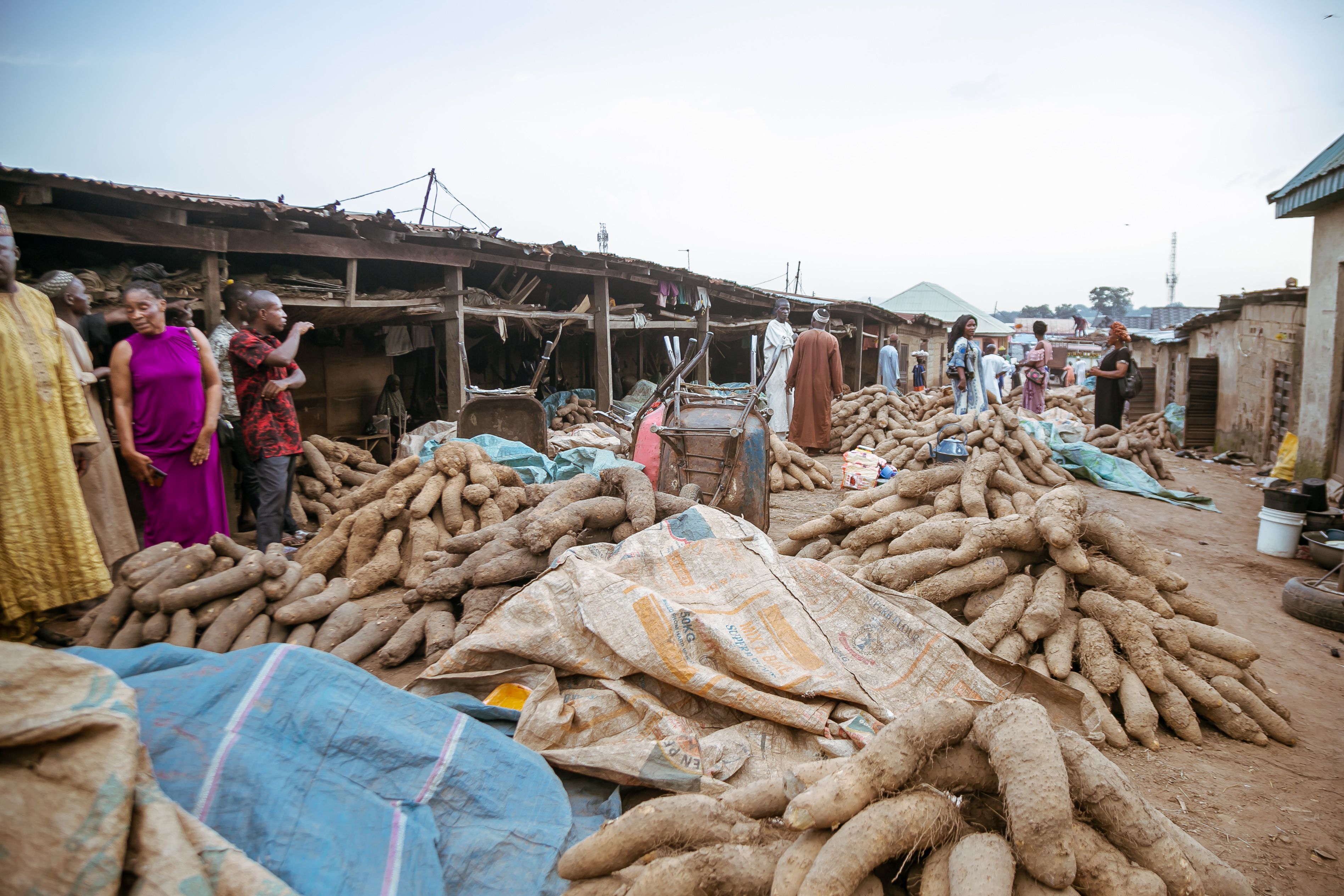
Nigeria supplies 70 percent of the world's yams. These wholesale yam traders and prospective buyers make their purchases at the Zuba market in Abuja, Nigeria. Photo by IFC/Freya PR Agency.
Nigeria supplies 70 percent of the world's yams. These wholesale yam traders and prospective buyers make their purchases at the Zuba market in Abuja, Nigeria. Photo by IFC/Freya PR Agency.
Click here for additional information on TechEmerge projects in Nigeria.
India

Even the busiest hotel lobbies have periods of calm. In the quiet moments up front, though, the cooling and refrigeration systems are still churning away in back rooms, making it possible for hundreds and sometimes thousands of guests to stay comfortable and fed.
But cooling large buildings like hotels comes at a cost that’s not evident on any check-out bill. Of all building types, hotels have the highest average energy intensity—which means that they consume more energy per built area than office complexes, hospitals, residential buildings, and other developments. In India, for example, up to 50 percent of energy used by hotels, malls, and large commercial spaces goes to cooling.
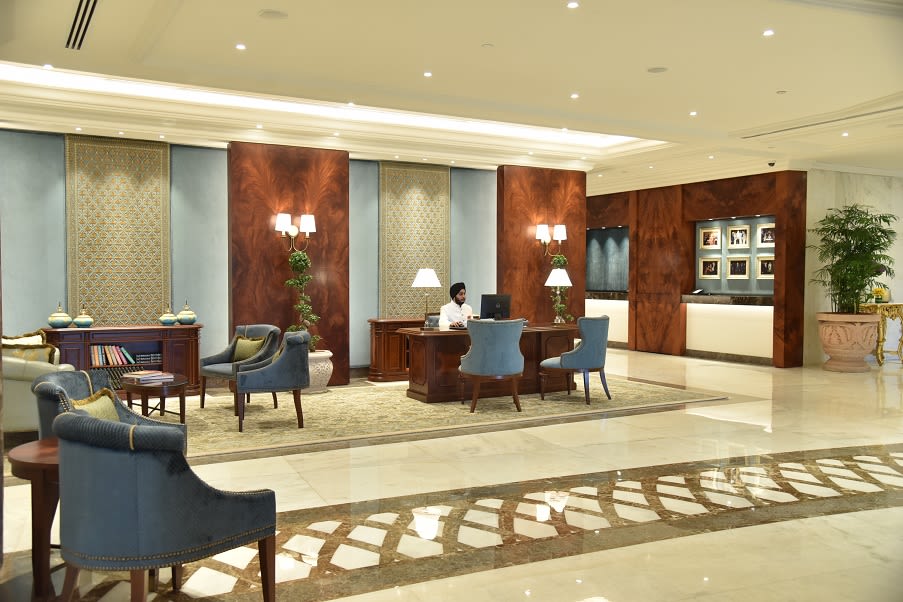
The lobby of the Taj Mahal Palace Hotel in New Delhi, India. Photo courtesy Taj Mahal Palace Hotel.
The lobby of the Taj Mahal Palace Hotel in New Delhi, India. Photo courtesy Taj Mahal Palace Hotel.
“Cooling as a cost head in the hospitality sector is the second largest expense that we have,” said Gaurav Pokhariyal, Chief Human Resources Officer, Indian Hotels Company Limited (IHCL). “It goes without saying that it has a tremendous amount of impact as far as climate is concerned, and not only from an operating efficiency point of view, but also on sustainability.” Cooling accounts for almost 50 percent of IHCL’s total energy use.
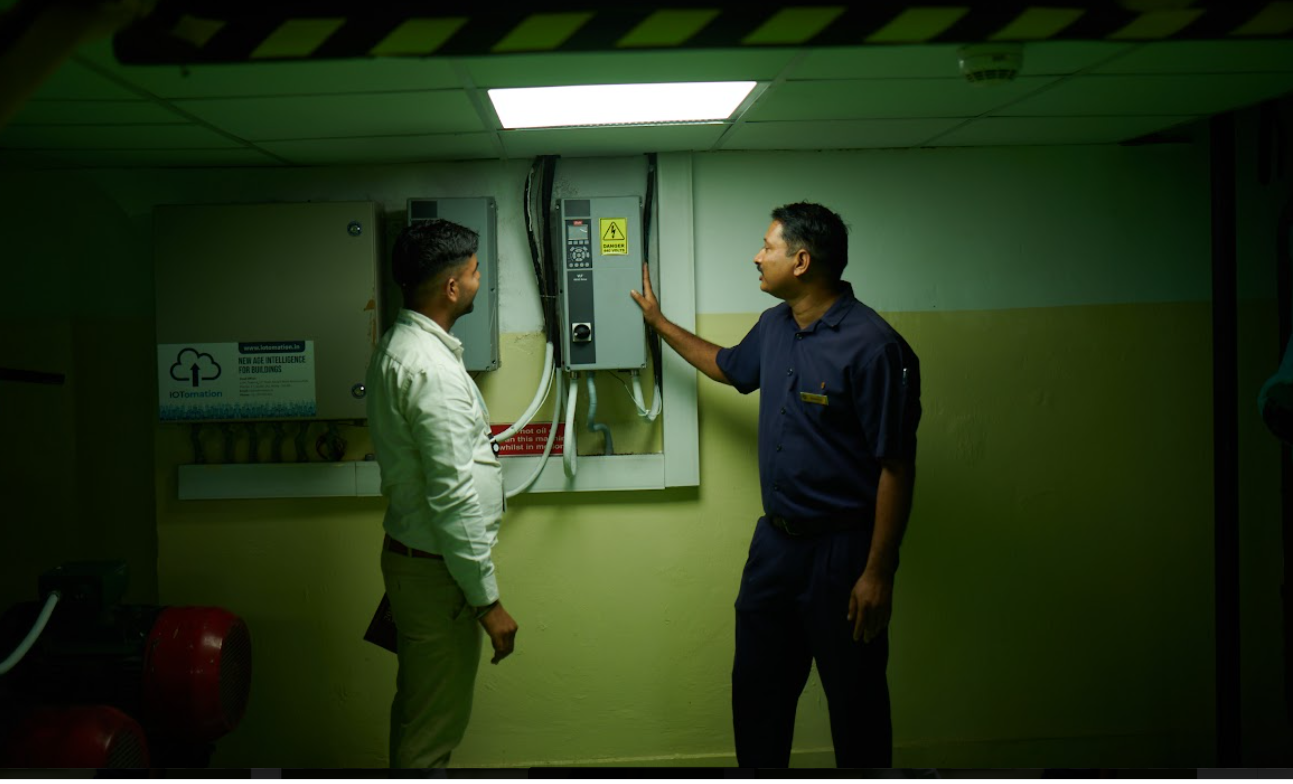
Ravinder Kumar (left) from IoTomation and IHCL's Banshi Prasad at the Taj Mahal Palace Hotel in New Delhi, India. Photo by Chirag Patnaik/IFC.
Ravinder Kumar (left) from IoTomation and IHCL's Banshi Prasad at the Taj Mahal Palace Hotel in New Delhi, India. Photo by Chirag Patnaik/IFC.
To meet demand for sustainable cooling, IHCL, part of the Tata Group, has been testing new ways to improve the efficiency of its cooling systems and reduce the hospitality sector’s climate impacts. Its partnership with TechEmerge has resulted in nine pilot projects, implemented with India- and Israel-based technology startups that have developed commercial cooling solutions. Another four pilots have been launched with Chalet hotels, and two more are in the pipeline.
Some of the start-up tech companies piloting new solutions, like New Delhi-based IOTomation, use Internet of Things (IoT), AI, and deep learning to maximize cooling efficiency. IOTomation’s goal is to lower energy use and greenhouse emissions by 20 percent and cut hotel operating costs by 25 percent.
Kolkata-based Paharpur, another tech company piloting a cooling solution for India’s hospitality industry, has built a cooling tower that aims to cut energy use and greenhouse emissions by 15 percent with a payback period of 12 to 24 months. As with the other pilots, successful technologies would be applicable for other large space cooling users such as shopping malls, airports, and business complexes.
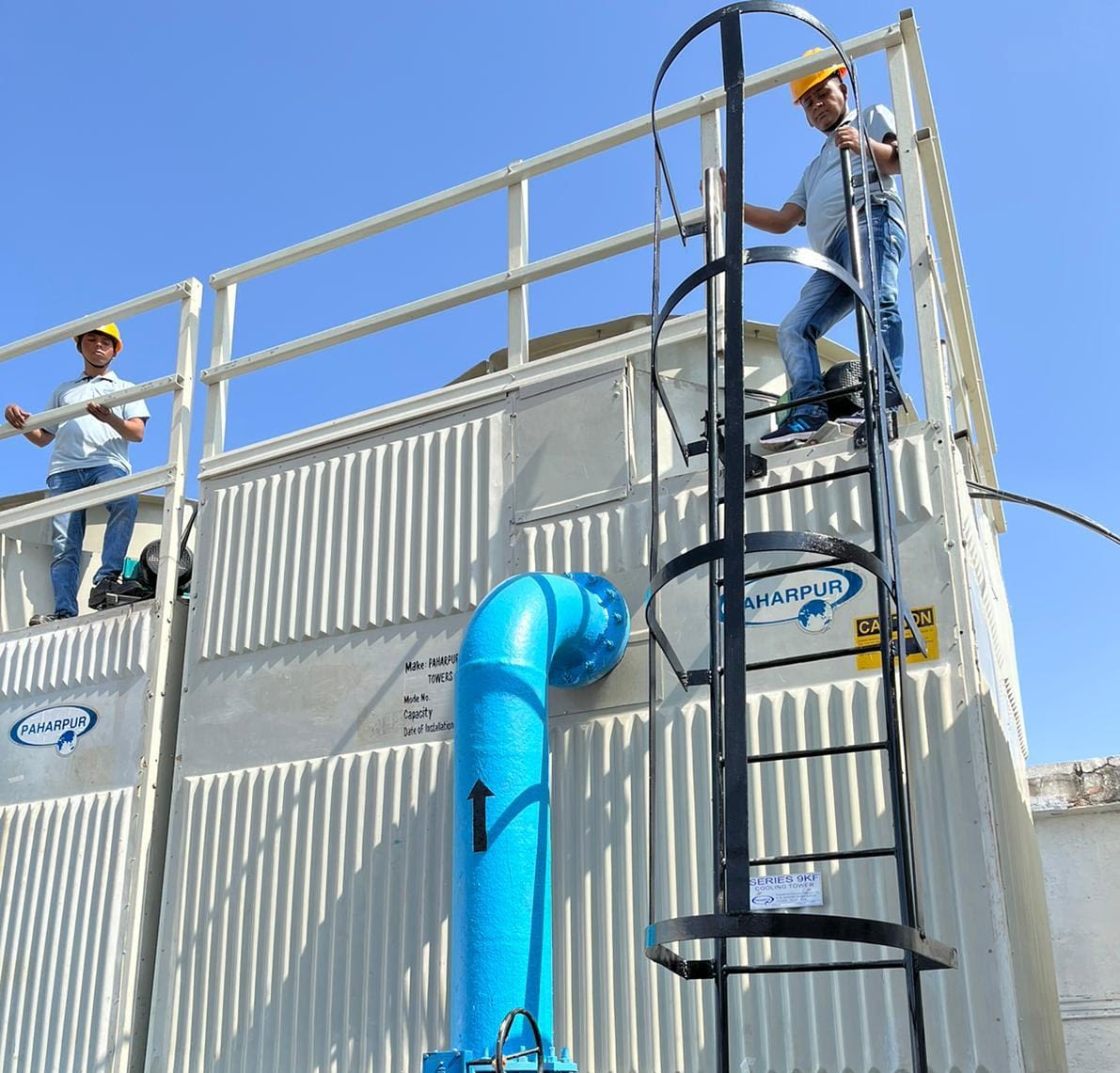
The climate-smart cooling tower from Paharpur is part of a TechEmerge pilot at the Taj Palace Hotel in New Delhi, India. Photo by Chirag Patnaik/IFC.
The climate-smart cooling tower from Paharpur is part of a TechEmerge pilot at the Taj Palace Hotel in New Delhi, India. Photo by Chirag Patnaik/IFC.
The cooling tower is an example of how innovative solutions can help slow down climate change, according to Alomoy Banerjee, Product Manager at Paharpur. “We are moving to a position where sustainability is not a choice,” Banerjee said. “We can’t afford not to have sustainability.”
—Gina Wilkinson contributed research and interviews to this story.
Click here for additional information on TechEmerge projects in India.
Mexico
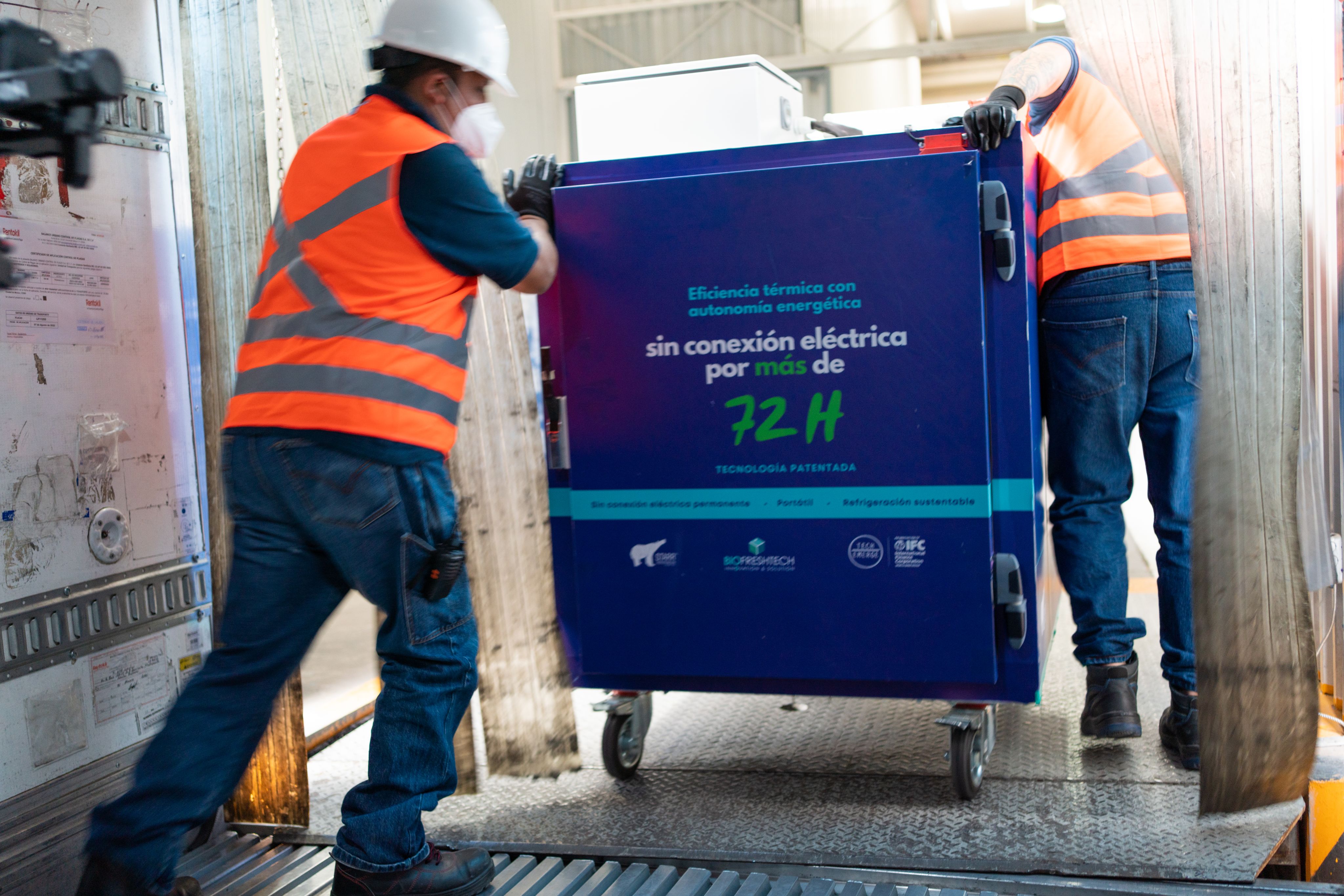
For Michelle Cabrera, the need for better-quality cooling products is personal.
“We need to take care of the planet,” says the CFO of Refrigeracion Starr, a Mexico-based HVAC and refrigeration distributor and provider of engineering services. “Much of the cooling technology used in Latin America is energy-inefficient, but even worse is what it does to the environment.”
Cabrera is referring to cooling products’ harmful impact on the ozone layer. To avoid this result, Refrigeracion Starr works with a wide array of clients, ranging from retail to agribusiness to pharma industries, to offer sustainable, flexible, and cost-effective solutions to keep pace with demand across Latin America.
Under the TechEmerge umbrella, Refrigeracion Starr is field testing thermal batteries from BiofreshTech, a Spanish innovator. These batteries, which are placed in refrigerators, look like flat plastic panels and come in different sizes and shapes to meet a variety of needs. The batteries can be programmed to a specific temperature because of their phase change materials (PCM). Only an initial charge is needed to cool or heat a space to the desired temperature for up to three days—and no ongoing electricity is required.
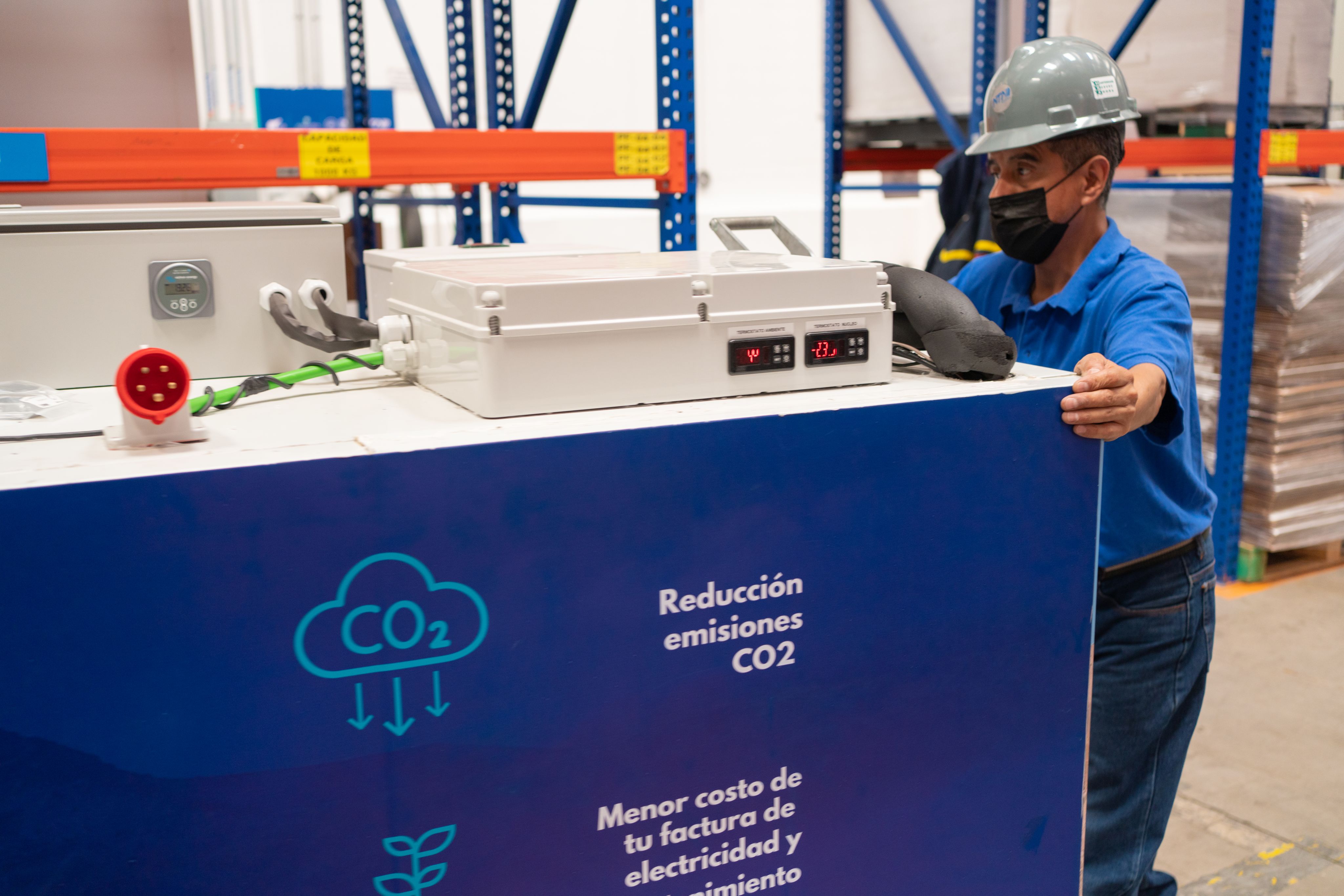
A BiofreshTech pharma cooler at NTA facilities in Tlalnepantla, Mexico. Photo by IFC/OnTheShoreFilms.
A BiofreshTech pharma cooler at NTA facilities in Tlalnepantla, Mexico. Photo by IFC/OnTheShoreFilms.
Starr and BiofreshTech field tested the technology in Mexico for two specific applications, a bottle fridge for retail shops and a pharma refrigerator. (The pharma refrigerator was tested with the participation of logistics operator NTA Pharma.) During the pilot, the bottle fridge stayed cool for 48 hours and the pharma refrigerator stayed cool for up to 72 hours at the desired temperature, without connection to power.
In the case of the pharma application, the ability to tailor temperature to the size of the pharmaceutical shipment, and any changing conditions during the delivery, is more “environmentally efficient,” says Rafael Matamoros, CEO of BiofreshTech.
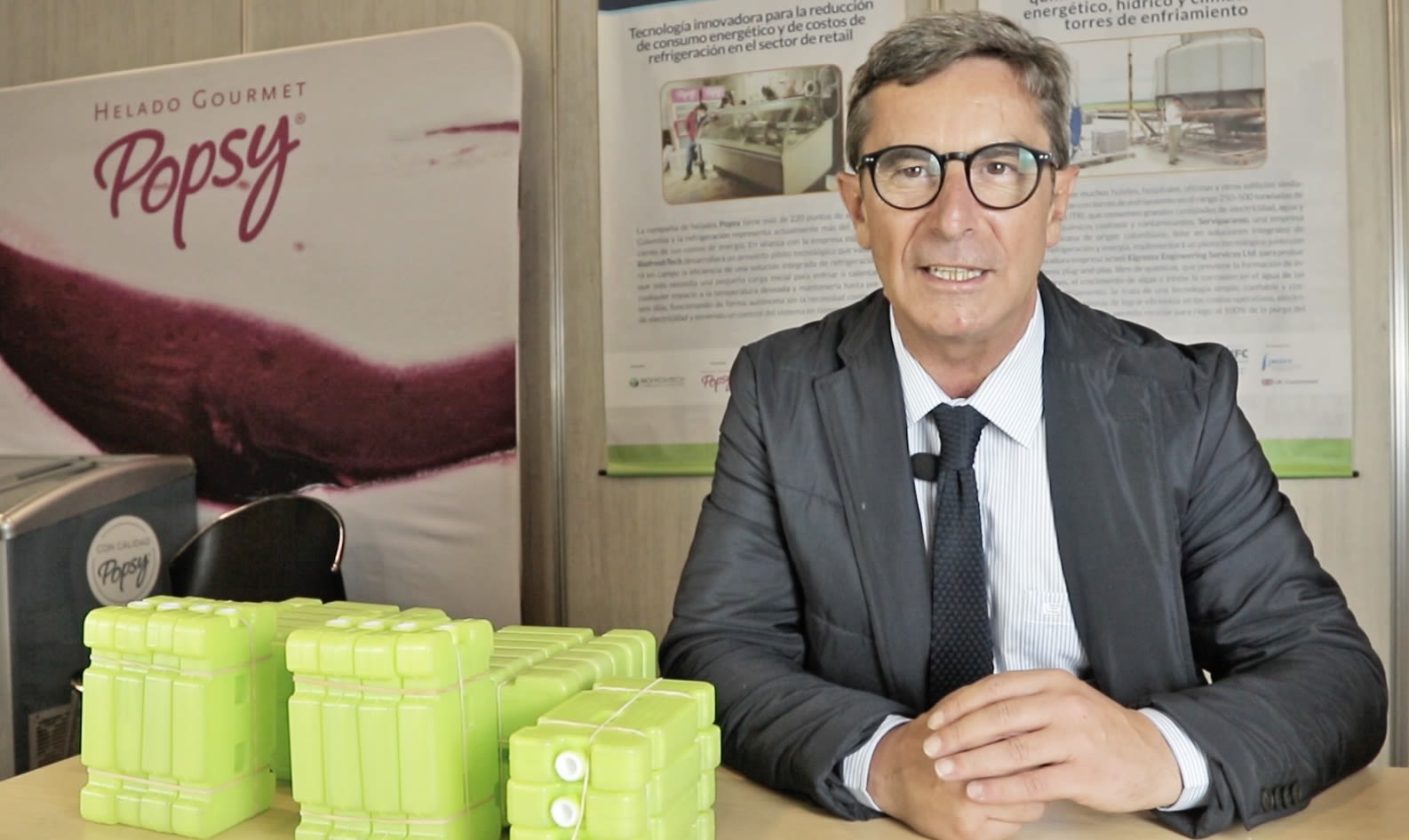
Rafael Matamoros, BiofreshTech's CEO, with a sample version of the company's thermal batteries during Expo Acaire 2022, a cooling trade fair in Bogota, Colombia. Photo by IFC/Andres Gomez 2022.
Rafael Matamoros, BiofreshTech's CEO, with a sample version of the company's thermal batteries during Expo Acaire 2022, a cooling trade fair in Bogota, Colombia. Photo by IFC/Andres Gomez 2022.
The pharma refrigerator integrated with BiofreshTech batteries has another advantage: the one cubic meter sized box can be used to deliver small shipments of health products that require different storage temperatures. That’s especially useful to NTA Pharma, a 20-year-old company that specializes in cold-chain logistics for the pharmaceuticals industry.
In addition to large shipments of temperature-sensitive vaccines, medicines, and health items, NTA Pharma also ships products to geographically remote communities within Mexico that may not need an entire refrigerated truck full of medicines. These long-haul deliveries to areas that are typically poorer and underserved allow NTA Pharma to reach people who may otherwise not receive medicines and vaccines.
NTA has been searching for more sustainable ways of doing business, according to Karla Amador, Director of Operational Excellence at NTA. Currently, refrigerated vehicles must be used for any temperature-controlled shipment of pharmaceuticals, however minimal the shipment—and this requires more trucks on the road, more drivers, and more of NTA’s resources.
“The pharma refrigerator optimizes the use of space for each shipment, and this helps us in two ways,” Amador says. “It reduces costs for NTA, since we will be able to consolidate different temperature ranges in the same delivery vehicle. [It] also reduces the carbon footprint by replacing less efficient systems [that use less eco-friendly refrigerants] in the transport of refrigerated products.”
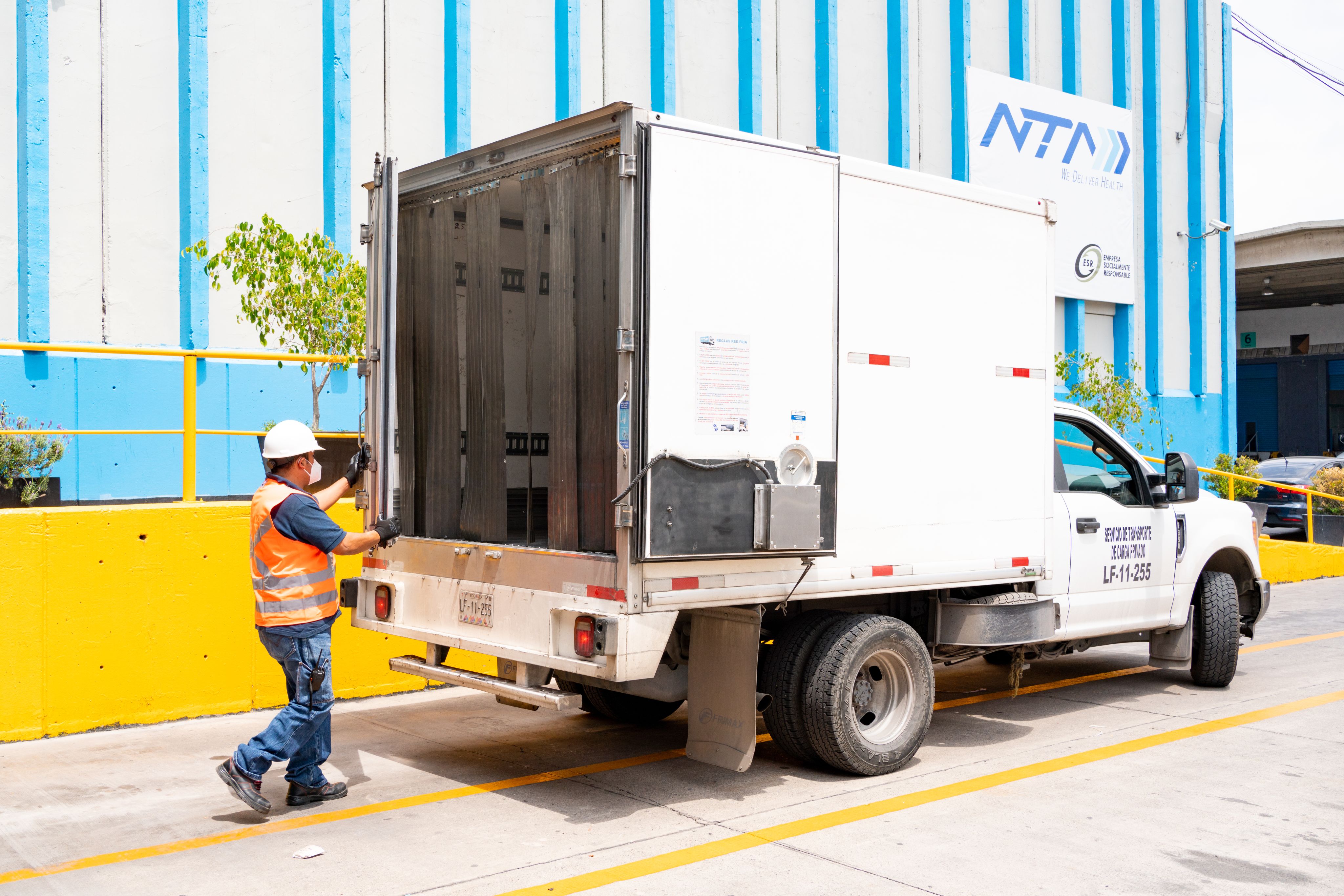
An NTA employee preparing a delivery truck loaded with BiofreshTech coolers at the NTA distribution center in Tlalnepantla, Mexico. Photo by IFC/OnTheShoreFilms.
An NTA employee preparing a delivery truck loaded with BiofreshTech coolers at the NTA distribution center in Tlalnepantla, Mexico. Photo by IFC/OnTheShoreFilms.
Cost-effectiveness is especially important in the cooling industry. In Mexico, space cooling and refrigeration account for 50 to 70 percent of electricity costs. But the need for cooling is expected to increase 500 percent by 2050—reflecting the combined effects of climate change and urbanization.
The scope of this need drives BiofreshTech to innovate, and results of the pilot have been so encouraging, according to Matamoros. Energy efficiencies for pharmaceutical products for transport and distribution “have far exceeded the expectations that we had set for ourselves and that we had even written at the beginning of the project, when it was only on paper,” he says. “We are sure that it will not be long before we start to see products in the Mexican market, as the result of this project.”
The BiofreshTech cooling technology is also being piloted in Colombia. In total, 22 sustainable cooling pilot projects have been underway in Mexico and Colombia.
Click here for additional information on TechEmerge projects in Latin America.
IFC’s TechEmerge Sustainable Cooling Innovation program is implemented in partnership with the UK Government. During 2023, the TechEmerge Sustainable Cooling Innovation program will expand to Andean Countries (Colombia, Ecuador, and Peru), as well as launch new initiatives in Africa and India.
Is your start-up developing a sustainable cooling solution? Click here to participate in the newest TechEmerge Open Call.
Read more here


